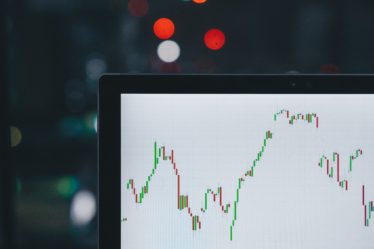As you may know, the trading day of exchange places is divided into several specific phases. This article aims to present those main periods and their use. I will specifically address Eurex (derivatives market) and London Stock Exchange (cash market), as they show the periods for two different kinds of equity markets.
Eurex is one of the three largest derivative exchanges with NYSE Euronext Liffe and Chicago Mercantile Exchange. Eurex is owned by Deutsche Börse and based in Frankfurt. London Stock Exchange (LSE) is the largest stock exchange in Europe (in terms of market capitalization) and the fourth largest in the world. As specified in its name, LSE is located in London.
Even if the trading periods are always slightly different in different markets, general ideas remain nearly identical. A trading day usually runs from early morning (7:30 am for Eurex and 8 am for LSE) to late afternoon (4:30 pm for LSE) or even later (10:30 pm for certain products managed by Eurex!). A trading day is typically made of 3 main phases which will be described in the next sections:
- Pre-trading
- Trading
- Post-trading
These phases can also contain sub-phases depending on the specific market rules of each exchange.
1. Pre-trading period
This first period takes place outside of regular trading hours.
For Eurex, during this phase, traders are allowed to prepare for the opening by entering quotes and orders. However, nothing is executed at this point. At this time, aggregated bid/ask prices and sizes are available. This period starts at 7:30am.
LSE has no pre-trading period as defined by Eurex, but it proposes a “trading reporting” from 7:15pm to 7:50pm. This “trading reporting” will not be addressed in this current summary.
2. Trading period
Following the pre-trading phase is the trading period which consists of several sub-phases. For Eurex and LSE, for example, it is roughly made of 3 main phases:
- Opening
- Trading
- Closing Auction
2.1 Opening
Opening is used to determine the opening price for each product. Therefore, it is used to start the continuous trading subphase. Contrary to trading phase, as we will see later, matching engines does not use price/time priority to determine the opening price. Instead, the opening price is calculated in order to get the maximum executable volume. Below is an example to illustrate this calculation:
- Example: Auction phase
Let’s consider the following book:
| Bid (qy@price) | Ask (qy@price) |
| 10 @ 10.00 | 15 @ 9.00 |
| 50 @ 9.50 | 55 @ 9.50 |
| 35 @ 9.00 | 10 @ 11.85 |
| 100 @ 8.75 |
Now let’s consider the accumulated bid and ask for each price.
| Accumulated bids | Bid | Price | Ask |
Accumulated asks |
Executable volume |
| 11.85 | 10 | 80 | 0 | ||
| 10 | 10 | 10.00 | 70 | 10 | |
| 60 | 50 | 9.50 | 55 | 70 | 60 |
| 95 | 35 | 9.00 | 15 | 15 | 15 |
| 195 | 100 | 8.75 |
The executable volume is defined as the minimum between the accumulated bids and asks. The price for which the executable volume is maximized will be the opening price. In this example, 60 contracts will be executed at the price of 9.50.
Price/time priority is used at the end of this auction period to determine which orders will be executed first. As a consequence, the 15 contracts at 9.00 will be executed first and only 45 contracts at 9.50 will be executed, considering the time priority.
Where there are two maximum executable volumes (for two different prices), the following rules are applied: the opening price cannot be higher than the best ask or lower than the best bid immediately after the auction phase.
After determining the opening price, the continuous trading phase is launched. The opening auction lasts 10 minutes for LSE (from 7:50 to 8pm). For Eurex, this phase is slightly more complicated, since the opening period consists of three separated parts: pre-opening, freeze and netting. The “Freeze” component allows Eurex Market Supervision to review the opening price. However, the aim of this period remains the same as for LSE.
2.2 Trading
As soon as the trading period starts, orders and quotes are added and compared continuously in the book for each product. As shown above, a book is divided into the bid side and the ask side. When an order or quote is entered during this phase, it is automatically compared with its corresponding contra-side. If the proposed price is better or equal to existing orders or quotes on its contra-side, then they are automatically matched (trade). Those ones which are not executed are added in the book and can be changed or deleted as required.
During the trading period, each market can have their own individual rules. Normal trading can be interrupted by small period of auction or fast market periods, according to the defined rules for each market.
For example, Eurex allows fast market periods on a per-product basis in case of high volatility (a measure for variation of price of a financial instrument over time). Other markets allow auction phases in case of high volatility. The calculation of the auction price follows the calculation described for the opening price.
At the end of the trading day, each product enters into another auction phase called closing auction.
2.3 Closing auction
Closing auction is used to calculate the closing price which represents the price of a product at the end of the day. The calculation during the closing auction is the same as for the opening auction. All quotes and orders available in the book are automatically transferred into the closing auction. However, if the price differs considerably from a reference price then it can be cancelled and the product may end without a closing price (Eurex).
For LSE the closing auction spans from 16:30 to 16:35. For Eurex, it depends on the product.
3. Post-trading
After a trading period, a product enters post-trading. This phase is different for each market. LSE, for example, defines a maintenance period and a “trade reporting only” phase from 16:35 to 17:00.
Concerning Eurex, right after the auction period, you are still able to enter quotes and orders but only for the next trading day. These quotes and orders will be available for the opening auction the next day.
Conclusion
As previously seen, main trading phases are roughly the same for all markets. However, they are always some differences that can be determined by reading the market rules available on the website of each market. This presentation is far from being exhaustive and other points could be explained more precisely (VWAP, order types available during each phase,…), however we hope to provide a good idea of the general phases during a trading day.
A list of the trading hours for all more markets is present on: http://en.wikipedia.org/wiki/List_of_market_opening_times
Bibliography
http://www.eurexchange.com/trading/market_model_en.html
http://www.londonstockexchange.com/home/homepage.htm
http://en.wikipedia.org/wiki/London_Stock_Exchange
http://en.wikipedia.org/wiki/List_of_market_opening_times

